
What changes can a store make to sell more products, without having to do a major overhaul of the store’s concept, lay-out and merchandise?
There have literally been done thousands of published studies on how specific store factors impact buying behavior. In addition, we’re discovering new insights everyday by conducting our own Eye Tracking and brain research in both real and simulated shopping environments.
In this blog, you’ll discover 5 profound insights which you can apply instantly to create a more effective retail environment.
1. Eye Level is not Buy Level
Forget the age-old adage of ‘eye level is buy level’. In each and every in-store Eye Tracking study we do, the data couldn’t be clearer: people don’t like to look at eye level at all.
Eye Tracking unobtrusively measures exactly where shoppers spend their attention, many times each second. When walking through a store and browsing through assortments, people’s baseline mode of attention doesn’t rest at eye level, but slightly below that. We seem to be most devoted to products where our hands can reach them most easily.
Practically, this means to not bluntly place your most important products (which are either high-margin or highly recognizable products fulfilling a signpost role for their category) at eye level. Instead, simply move these products to the shelves slightly below that, which we like to call ‘hand level’.
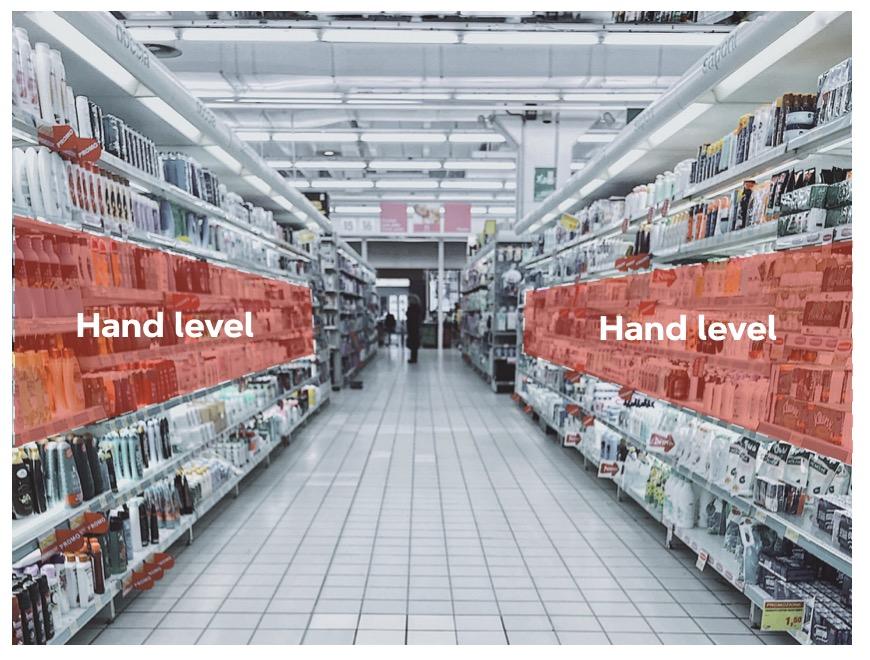
2. Where to put the price on the price tag? Left or Right?
It may seem irrelevant which place on the price tag you put your price, but research shows it matters a great deal! Price position – more specifically: left or right – affects how we subconsciously feel about the deal. We mentioned this effect earlier in "How Two Psychologists are Making New York’s Museum & Gift Shop Sales go Through the Roof."
When the price is placed at the left, this automatically activates an association with affordability. This is quite powerful when the product is a steal to begin with; a left-placed price will make the deal all the more alluring and hence end up in the shopping bag more often. However, for luxurious, high-quality and premium products, we see an opposite pattern emerge. These products benefit from right-placed prices, which puts a psychological silver lining around its core appeal.
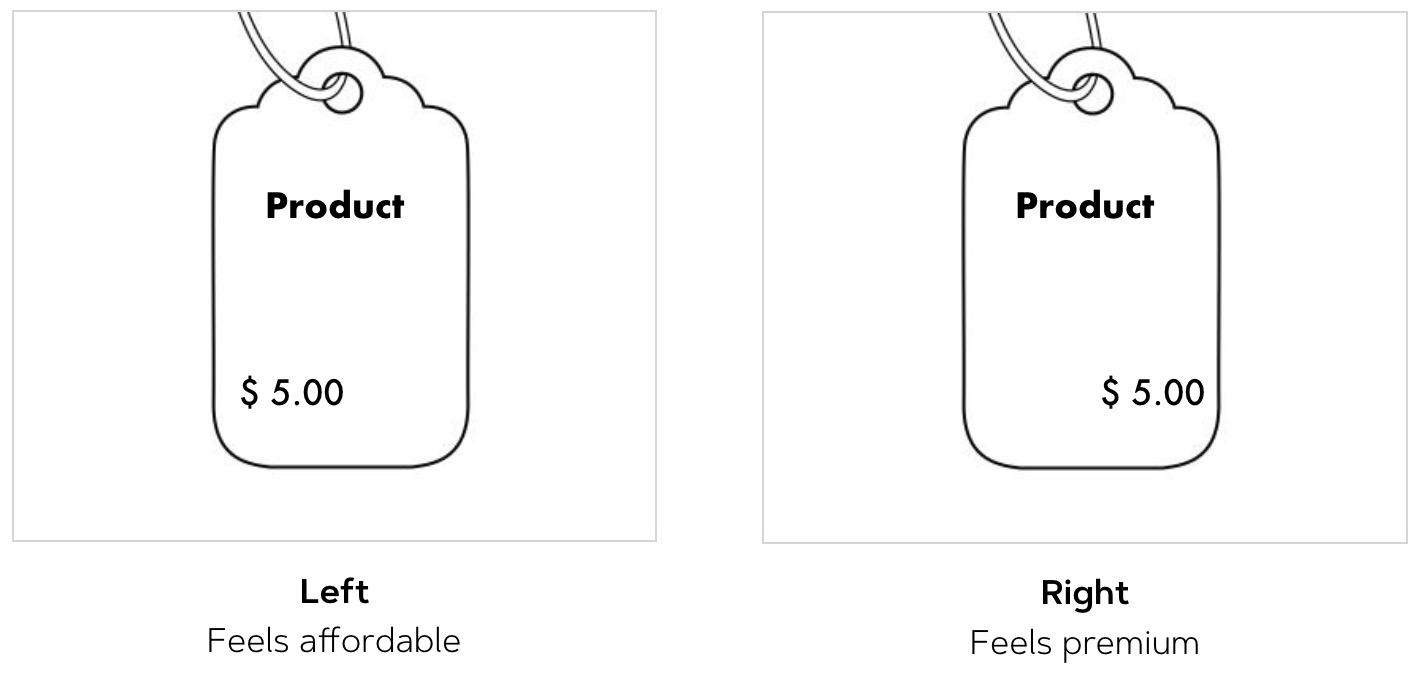
3. Why Similar Products Never Should Have the Same Price
Imagine you’re standing in a museum gift shop and trying to decide between two $ 4.75 mugs. More often than you’d think, this decision is so hard you’re likely to jump to option #3: buy neither.
There’s one extremely simple method to counteract people’s tendency to avoid choice when comparing similar options: making the choice easier by implementing a price difference.
Instead of the mugs costing $4.75 each, price one at $4.70 and the other at $4.80. When people aren’t up to the task of deciding which color most suits their coffee table (probably neither), they can rely on the easy choice strategy by following a mental shortcut such as “I always go with the cheapest/most expensive option”.
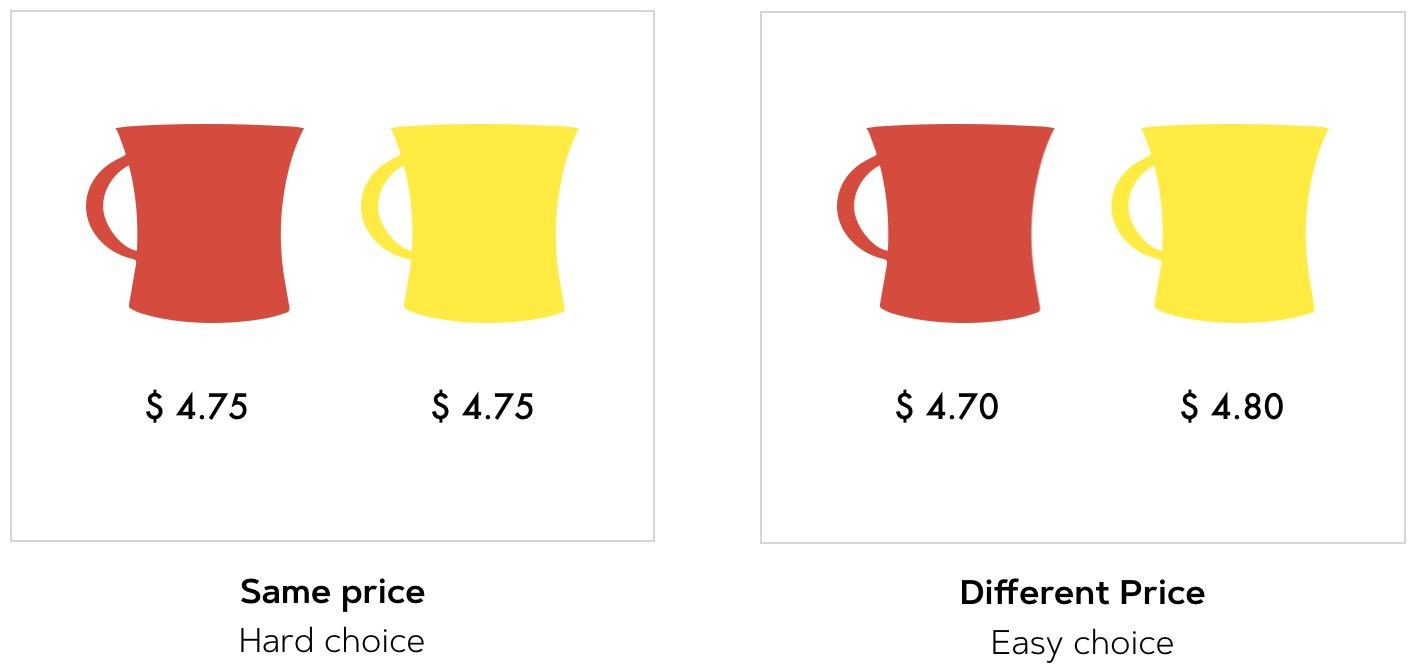
4. A small change to multiply discount effectiveness
Traditionally, the lay-out of a discount offer originated completely from the perspective of the designer. The old price was often showcased in a small font, dwarfing next to the new price, which was designed in big bold letters.
From the perspective of a consumer psychologist, this format leaves room for improvement – quite literally. For years, cognitive psychologists have studied how physical concepts oftentimes subconsciously activate psychological concepts. For instance, when a store clerk hands you a warm drink you’ll instantly feel more sympathetic (i.e., warm) than when the person would’ve handed you a cold one.
In the realm of pricing, consumer psychologists have discovered that spatial distance and the font size of discount offers have similar profound effects on how customers perceive that offer. Research shows:
- Increase the physical distance between the old and new price. Psychologically, this feels like a bigger discount.
- Design the old price (crossed out) in a larger font than the new price. Large>small increases our feeling the price dropped significantly, whereas small>large does the opposite.
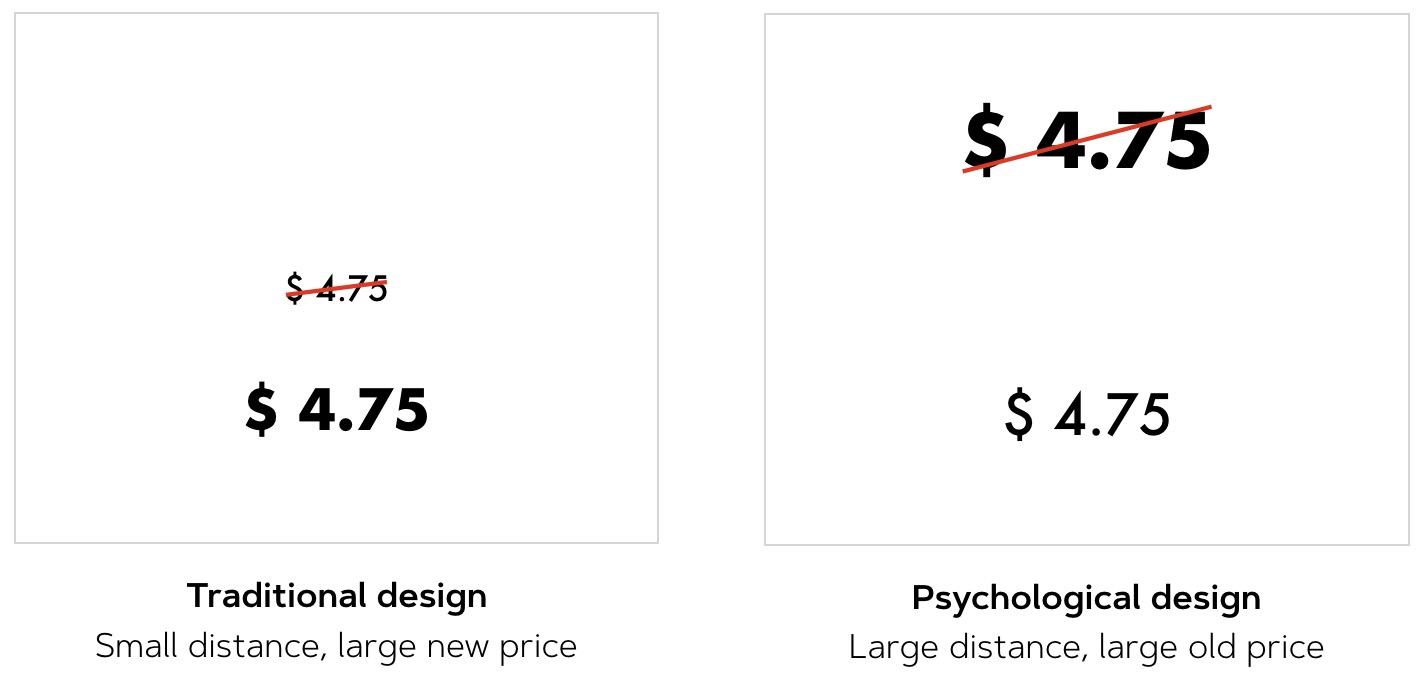
5. The perfect sign
Store signing oftentimes combines text with graphics. It turns out that the design of visual and textual information matters a great deal for whether people attend to these signs, as well as their ease of processing the information.
The human brain consists of two hemispheres. Put somewhat simply, our left brain is specialized in dealing with individual bits of information (“the logical brain”), whereas the right brain focuses more on the overall picture (“the creative brain”).
The nerves in our eyes are in fact crosswired, which means that our left visual field reaches the right part of our brain whereas the right visual field enters the left part. When we think back to the specialized hemispheres, we arrive at the conclusion that our brain is naturally prepared to process:
- images from the left of our visual field
- text at the right of our visual field
Countless of field studies show that information such as store signs and online banners ads are more likely to get acknowledged when they correspond with our left-right preference.
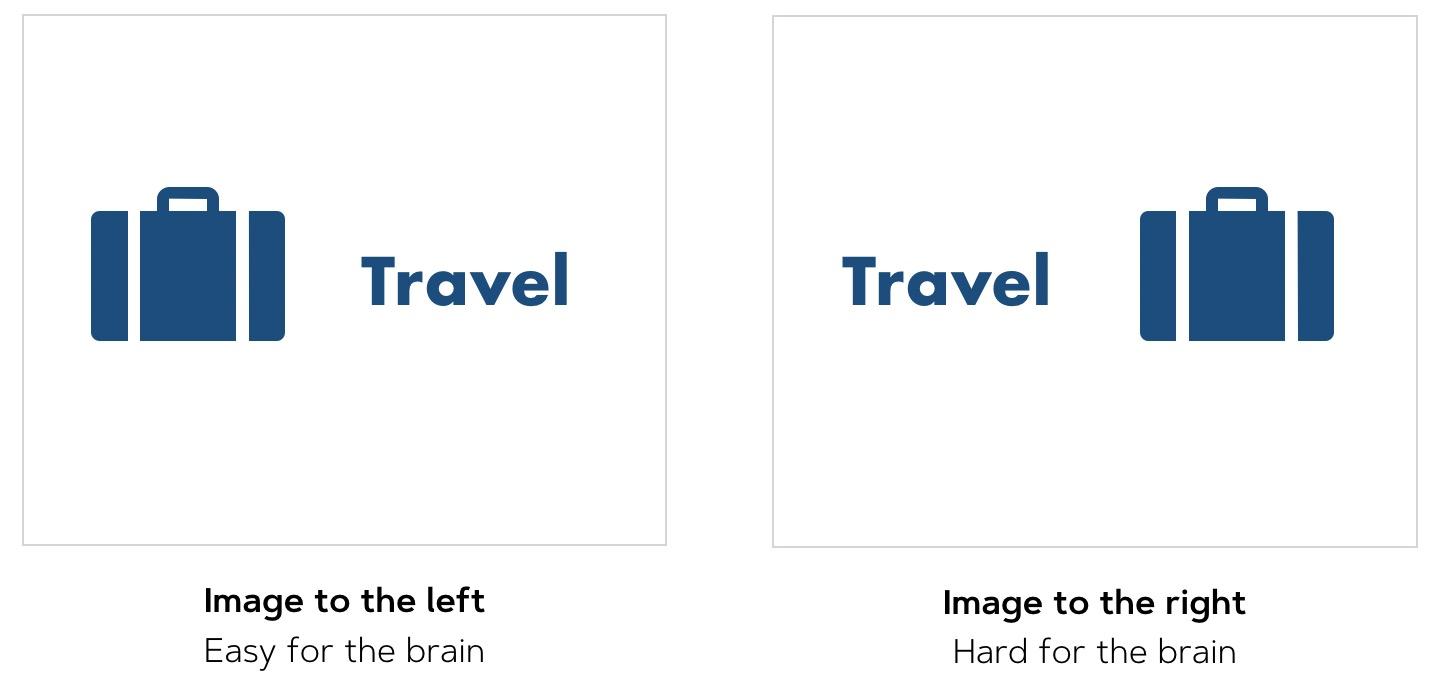
Want to get more retail psychology insights?
This blog was brought to you by Unravel, the first agency to bring insights from psychology and neuroscience to the leisure industry in the form of a systematic Psychological Store Scan.
Small adjustments can make a big difference. Interested in learning how your store may benefit from our psychological evidence-based approach? Contact us.






